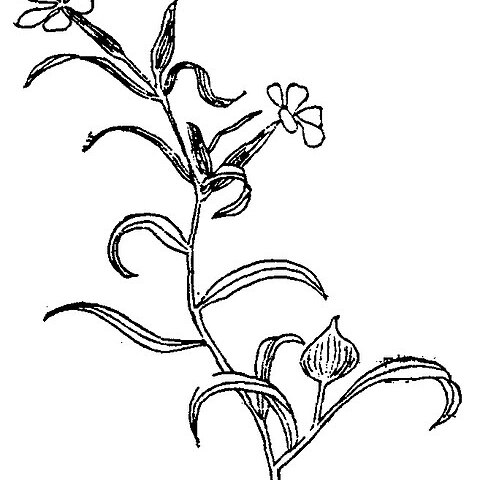Herbs annual, 25--60 cm tall, shortly glandular hairy. Principal roots slightly lignified. Stems solitary, erect, simple. Basal leaves oblong to linear-lanceolate, cauline leaves linear or lanceolate, 5--8 cm × 5--10 mm, pubescent, margin ciliate. Dichasial cymes few to many flowered; flowers erect, ca. 2 cm in diam. Calyx green, conical, 2--3 cm × 3--4.5 mm, umbilicate at base, inflated in fruit, to 3.5 cm, lower part broadly ovoid, 6.5--10 mm in diam., upper part attenuate; longitudinal veins 30, shortly glandular hairy; calyx teeth narrowly lanceolate, ca. 1/3 as long as to longer than calyx, margin narrowly membranous below, ciliate. Androgynophore to 1 mm, subglabrous. Petals 2.5--3.5 cm; claws included in calyx, narrowly lanceolate, 2--2.5 cm, glabrous, auricles triangular; limbs pink, obovate, ca. 8 mm, margin entire or slightly emarginate, sometimes slightly erose; coronal scales white, narrowly lanceolate, 2--2.5 mm. Stamens and styles included or slightly exserted; filaments sparsely shortly hairy. Styles 3. Capsule pyriform, ca. 15 × 6--8 mm. Seeds dark brown, reniform, ca. 1.5 mm. Fl. May--Jun, fr. Jun--Jul. 2n = 20.
An annual herb. It grows 25-61 cm high. It has glandular hairs. The leaves are opposite. The lower leaves are spoon shaped and the leaves on the stem are sword shaped. They are 5-8 cm long by 5-10 mm wide. The flowers are pink. There are only a few flowers at the tip of the plant. The calyx tube is 2-3 cm long. The fruit is an oval capsule.
A related Eurasian sp., with the cal becoming 2–3 cm and much inflated, the pet-blade 8–12 mm, and the seeds 1.2–1.5 mm wide, has been collected in Del.

